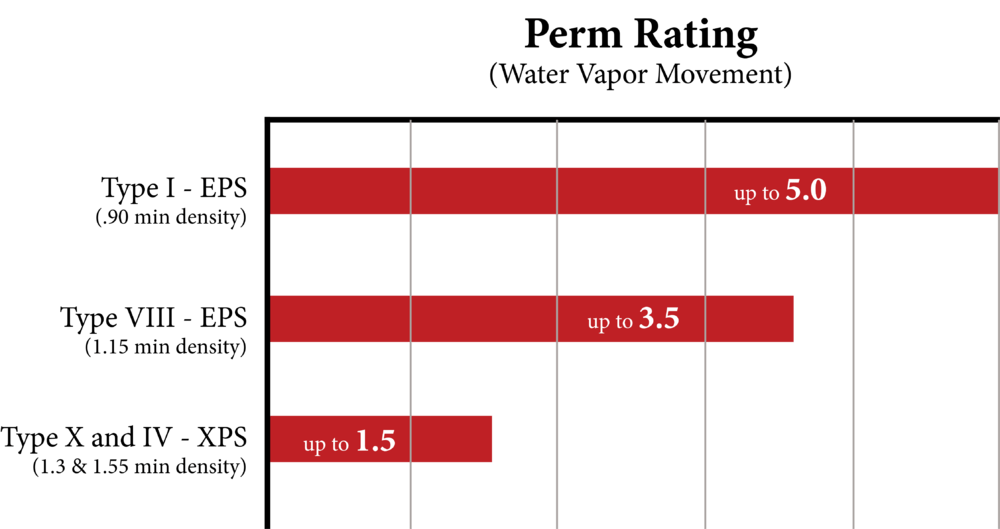Moisture Management
When adding insulation to a home, it is important that moisture is efficiently controlled.
Managing Water Vapor from the Inside
Building scientists measure breathability in terms of a permeability rating, or perm rating. According to ASTM, a perm rating of 1.0 or less is consider a "significant vapor barrier." Vapor barriers provide insulation value but virtually no breathability. Other extremes, like house wraps with perm ratings of 58, breathe but provide no insulation value.
Many Progressive Foam insulation products feature perm ratings up to 5.0, depending on the specific product. This allows the products to work like Gore-Tex, a waterproof yet breathable material popularly used in athletic apparel and hiking shoes. Gore-Tex allows moisture generated by your body to escape, while still protecting you from the elements.

Managing Bulk Water from the Outside
Mother Nature can be tough on a home, subjecting it to harsh moisture threats such as wind-driven rain, sleet and snow. Water from these sources can enter your wall system through leaks in the building envelope. Your siding and insulation system needs to protect the wall from exterior sources of bulk water.
When adding insulation to your home, it is important not to create moisture concerns in the process. The building materials you choose must be designed to channel bulk water out of the wall and then allow air to move through the system to dry the wall completely.
Many of our contoured insulation products fill the gap between your siding and the wall surface, preventing a good portion of water from even getting behind your siding in the first place. It's high permeability rating then allows it to dry the wall out sufficiently, protecting your home from potentially dangerous and expensive moisture damage.
Some siding insulation products, such as HalfbackH20, also feature built-in moisture management grooves to help efficiently channel bulk water away from the wall.


